I have four books in process or about to be released. They are:
The Battle for Kyiv:
– UK release date: 28 November
– U.S. release date: 18 January 2024
Aces at Kursk:
– UK release date: 30 January 2024
– U.S. release date: posted as 18 January 2024, but suspect release date will be in March 2024.
Hunting Falcon:
– UK release date: 28 February 2024
– U.S. release date: posted as 29 February 2024, but suspect released date will be in April 2024.
The Siege of Mariupol:
– UK release date: sometime in 2024
– U.S. release date: sometime in 2024
Books under consideration for 2024/2025:
– The Battle for the Donbas
– The Battle of Tolstoye Woods (from the Battle of Kursk)
– More War by Numbers

Excellence in Historical Research and Analysis

Excellence in Historical Research and Analysis
Category Modeling, Simulation & Wargaming
Wargaming 101 – Summary
Chip Sayers has posted a number of articles to this blog under the title of “Wargaming 101.” He had lots of hands-on experience in the bowels of the Pentagon, so I found this to be a particularly interesting series of posts. He will be making a presentation at the second Historical Analysis Annual Conference (HAAC) on 18 October 2023. The presentation is called Wargaming 101. See: Schedule for the Second Historical Analysis Annual Conference (HAAC), 17 – 19 October 2023 | Mystics & Statistics (dupuyinstitute.org).
Anyhow, as a read ahead, all of his Wargaming 101 blog posts are listed below:
Wargaming 101: The Use of Wargames in Training | Mystics & Statistics (dupuyinstitute.org)
Wargaming 101 – Sayers vs. The U.S. Navy | Mystics & Statistics (dupuyinstitute.org)
Wargaming 101 – The 40-60-80 Games | Mystics & Statistics (dupuyinstitute.org)
Wargaming 101 – The 40-60-80 Games | Mystics & Statistics (dupuyinstitute.org)
Wargaming 101: The Bad Use of a Good Tool | Mystics & Statistics (dupuyinstitute.org)
Wargaming 101: A Tale of Two Forces | Mystics & Statistics (dupuyinstitute.org)
A couple supporting posts:
“The Games the Marine Corps Plays” | Mystics & Statistics (dupuyinstitute.org)
A story about planning for Desert Storm (1991) | Mystics & Statistics (dupuyinstitute.org)
Also, we are still looking for presentations for the 2nd HAAC: Call for Presentations for the Second Historical Analysis Annual Conference (HAAC), 17-19 October 2023 | Mystics & Statistics (dupuyinstitute.org).
Weaponising Historical Analysis – Dr. James Storr
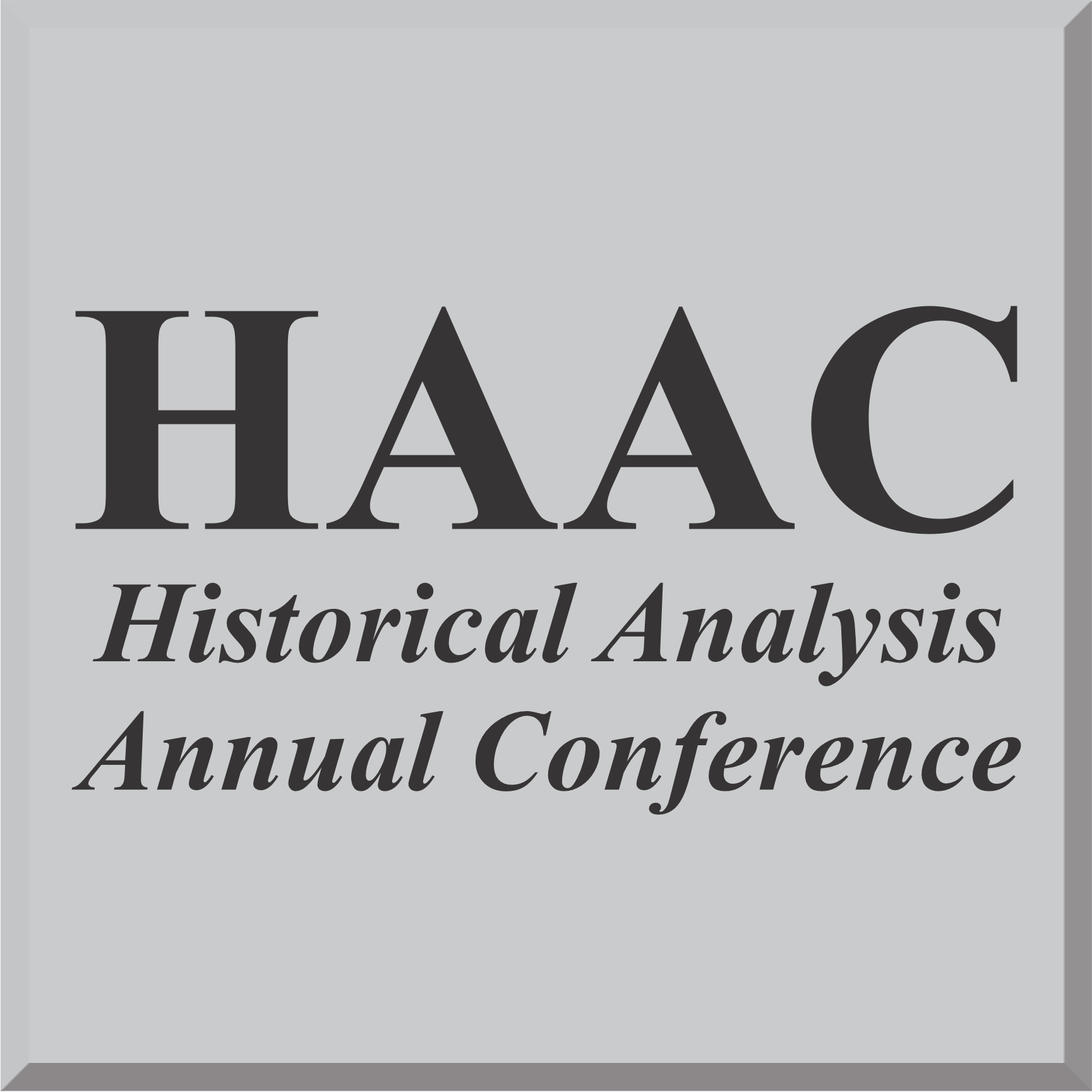
The sixth briefing of the day was Weaponing Historical Analysis by Dr. James Storr. He is the author of three well received books.
Concerning my book War by Numbers, one Amazon.com reviewer stated that:
A great deal of the value of the book to the reader will depend upon how much that reader needs to see the data to believe. If one is prepared to accept the word of an expert, then Jim Storr’s The Human Face of War is the better book and the better read and presents much the same conclusions in briefer form – it would definitely be more suited to the average reader. On the other hand, for the reader that needs to see the numbers, this (along with Rowland and Biddle) is the must read. And for those most interested in the subject, both are very rewarding in different ways.
Anyhow, we only have less than 17 minutes of his presentation. Then the Zoom video recording stopped because it does not record for more than six hours, unbeknownst to us. So we missed the rest of his presentation. What we have is here: (9) Weaponising Historical Analysis: Storr – YouTube
His slides are here: Presentations from HAAC – Weaponizing Historical Analysis: A Case Study of the Introduction of HA Into Doctrine | Mystics & Statistics (dupuyinstitute.org)
The recording ends of the slide titled “Factors,” which is slide 18 out of 32. You will have to go here to catch the rest of the slides: HA-Conference-DC-Sep-22-V1.2.ppt (live.com). Sorry, nature of self-funded conferences, we don’t employ professional audio-visual people.
Killing Captain Hindsight – Dr. Niall MacKay

Our fifth presentation of the day was Killing Captain Hindsight: Quantifying Chance in Military History by Dr. Niall MacKay of the University of York.
It is posted to our YouTube Channel here: (9) Killing Captain Hindsight: MacKay – YouTube
The briefing ends at 57:40 and then there is five minutes of discussion afterwards.
The slides for the briefing are here: Presentations from HAAC – Killing Captain Hindsight: Quantifying Chance in Military History | Mystics & Statistics (dupuyinstitute.org)
Fitting Lanchester Equations – Video

Fitting Lanchester Equations by Dr. Thomas Lucas (NPS) has now been posted to our YouTube channel. It was his presentation given at the 21st HAAC in September 2022. The briefing runs 54:20 with a few minutes of questions and discussion afterwards: (5) Fitting Lanchester Equations: Lucas – YouTube
We have also done a few blog posts on Lanchester equations:
Lanchester equations have been weighed…. | Mystics & Statistics (dupuyinstitute.org)
TDI Friday Read: The Lanchester Equations | Mystics & Statistics (dupuyinstitute.org)
The Lanchester Equations and Historical Warfare | Mystics & Statistics (dupuyinstitute.org)
Beyond Lanchester | Mystics & Statistics (dupuyinstitute.org)
The viewgraphs for these briefings were previous posted here: Presentations from HAAC – Fitting Lanchester Equations | Mystics & Statistics (dupuyinstitute.org)
The schedule for our next conference is here: Schedule for the Second Historical Analysis Annual Conference (HAAC), 17 – 19 October 2023 | Mystics & Statistics (dupuyinstitute.org)
Third video posted to our YouTube site
 We have now published the third video from the first Historical Analysis Annual Conference (HAAC) to our YouTube site. It is here: (1) Data for Wargames: Lawrence – YouTube
We have now published the third video from the first Historical Analysis Annual Conference (HAAC) to our YouTube site. It is here: (1) Data for Wargames: Lawrence – YouTube
The briefing in this third video goes for most of the video, as discussion and comments were made mostly during the briefing. The briefing ends at 55:30 the video ends at 59:27.
A few discussions of note:
At 10:10 – A discussion of what TDI does
At 18:52 – A discussion of Breakpoints
At 32:54 – A discussion of Suppression
At 37:18 – A discussion of what we don’t know
There were some issues with sound from virtual attendees, but one of these was Robert Helmbold, so, please bear with us.
The viewgraphs for these briefings were previous posted here: Presentations from HAAC – Data for Wargames | Mystics & Statistics (dupuyinstitute.org)
The schedule for our next conference is here: Schedule for the Second Historical Analysis Annual Conference (HAAC), 17 – 19 October 2023 | Mystics & Statistics (dupuyinstitute.org)
The 3:1 Ratio
Was searching around on YouTube yesterday on “Dupuy Institute” and ran across this video: People Always Get This Wrong – YouTube. This was posted three weeks ago. Preston Stewart is not known to me.
I am called out by name on 5:14 in the video. It is clear he pulled up one of our old reports, the charts at 6:00 and 6:14 are ours. The chart at 6:36 is ours and was later republished in War by Numbers. It appears to be abbreviated. The complete chart is on page 10 of War by Numbers. The chart at 6:44 has also been republished in War by Numbers. The chart at 7:30 is from our reports. The one high odds attack that failed on that chart was an Iraqi attack against the coalition. See: TDI – The Dupuy Institute Publications.
Anyhow, would recommend that Mr. Stewart look at Trevor Dupuy’s Understanding War, Chapter 4: The Three-to-One Theory of Combat, and at my book War by Numbers, Chapter 2: Force Ratios.
Also, he might might the following blog posts are useful:
Summation of Human Factors and Force Ratio posts | Mystics & Statistics (dupuyinstitute.org)
Force Ratios at Kharkov and Kursk, 1943 | Mystics & Statistics (dupuyinstitute.org)
Force Ratios in the Arab-Israeli Wars (1956-1973) | Mystics & Statistics (dupuyinstitute.org)
Summation of Human Factors and Force Ratio posts | Mystics & Statistics (dupuyinstitute.org)
Force Ratios and CRTs | Mystics & Statistics (dupuyinstitute.org)
Talking Force Ratios Once Again | Mystics & Statistics (dupuyinstitute.org)
Anyhow, thank you Preston Stewart for the call out.
I will be doing a presentation on Force Ratios at the second HAAC on 17 October and will be doing a similar presentation in Norway in early November. See: Schedule for the Second Historical Analysis Annual Conference (HAAC), 17 – 19 October 2023 | Mystics & Statistics (dupuyinstitute.org).
We do have a YouTube site: The Dupuy Institute – YouTube. So far the only video posted is a test video. The husky is named Max. We may be posting some more videos there in the next couple of months. There are three subscribers to our site. I gather we can get some funding if we get a 100,000 or more subscribers. So only 99,997 to go. Please subscribe.
Wargaming 101: The Use of Wargames in Training
Another posting from William “Chip” Sayers. Part of his “Wargaming 101” series:

Wargaming 101: The Use of Wargames in Training
When I arrived at Defense Intelligence Agency in the summer of 1986, my assigned cubicle was just down the row from the guy who was on a one-year temporary duty assignment to run our new analyst training program. The Introduction to Defense Intelligence Research and Analysis (IDIRA) course was seven weeks packed with modules on various subjects, such as effective writing and briefing techniques, US Intelligence Community structure, organization of the Department of Defense, etc. The core of IDIRA was about a week’s study of each of the US military services and their warfare areas, including trips to several bases along the eastern seaboard. As a capstone exercise, the students did a couple of days of reading message traffic (it was all hardcopy, back then!) and building an understanding of an obscure, historical conflict, and then doing a, “now what happens?” briefing to the instructors and high-level DIA administrators. When the briefing was over, the instructors would brief-back the class on what really happened next and then critique the students’ performances.
The IDIRA program manager, was a good guy and we became friends before I ever took the class. One of my first questions was to ask if IDIRA made use of wargames as teaching tools. With the exception of a half-day logistics exercise in the ground warfare block, the answer was no. I immediately went to work on adapting a commercial board wargame for the air block. The base game was about the air war over North Vietnam and my playtest group included an analyst who had flown USAF F-4s during the conflict. Despite my best efforts, the game remained unduly cumbersome and the scale, as tested, was inappropriate for what I was trying to accomplish. Scratch attempt number one.
I took IDIRA myself in the Fall and as it happened, two of my classmates were avid commercial wargamers. Mark, an Army officer, Shane, an Air Force officer, and I had many discussions on how we might devise a wargame to replace my first effort. A couple of months after we graduated from IDIRA, Mark presented Shane and I with a game of his own devising which, if a little clunky, was of the scale we needed and was quite workable for student use. Over the next couple of years, I codified the rules and came up with lookup tables that allowed us to adjudicate combat in a realistic way without resorting to the use of a random number generator (dice). The students were always suspicious of dice, believing that the element of randomness made the exercise less realistic. In point of fact, it made combat more realistic by taking out a measure of easy predictability, but if it helped them to buy-in, so be it.
Over time, our game successfully got across to the students the lessons we wanted to impart and proved quite popular, always scoring as one of the best IDIRA blocks in the students’ critiques. I still have a stack of critiques in which every student in the class gave us a perfect score.
Meanwhile, the Navy team was not far behind us in developing their own game. Chris, a Navy officer and another friend of mine, taught the students to play an off-the-shelf naval wargame that he had codesigned. Again, the students absorbed what they were intended to learn and had fun doing it. And while we’re on the subject, I think fun is highly underrated. Over the years of my experience in using instructional wargames, the more “fun” the students had, the better they learned the lessons we were trying to get across. The students, with few exceptions, were usually highly competitive and could be counted on to delve into the games, enhancing the learning experience.
IDIRA never had a wargame for the ground forces block, other than the rather good logistics exercise, and Chris and I began to conspire to put together a wargame that would teach combined-arms warfare at the operational level. We would include air, naval and ground forces elements in the game and illustrate for the students how these warfare disciplines worked together to prosecute a campaign. There was only one choice for a historical campaign that I believed was small and sufficiently self-contained to be appropriate for our purposes: the 1982 Falklands War between Argentina and the UK.
 A map from Larry Bond’s Resolution 502, an early scenario book for his Harpoon naval wargame.
A map from Larry Bond’s Resolution 502, an early scenario book for his Harpoon naval wargame.
To handle the air and naval aspects of the exercise, we used another off-the-shelf commercial game that Chris had coauthored, Harpoon. For the ground portion, we used the technique I outlined in a previous post, Wargaming 101: A Tale of Two Forces. We ran things a little differently for this exercise — the students were all playing the roles of various UK commanders, while the instructors provided a Red Cell directing the Argentine forces. Instructors not involved in the Red Cell advised the students such that they only had to make general decisions without having to have a deep understanding of the rules of the game. The students had to establish air and naval superiority sufficient to allow a landing, then march from the beaches to their objectives, eliminating resistance along the way. We allowed the students to choose their landing beaches pretty much as they wanted, and then critiqued their choice according to the practicality, defendability and potential to support offensive moves. When ground forces actually came into contact, I simply drew a ratio and gave the students the results: at ≤1:1, the students were rebuked for making a bad attack and were told to bring up reinforcements or abandon the effort. At less than 3:1, the students were merely advised to bring up reinforcements and try again, and at 3:1 or greater, the battle was a clear-cut victory and the British ground forces commander won appropriate kudos.
The students enjoyed the exercise because it wasn’t abstracted, it used real-world physics units (nautical miles, nautical miles per hour, etc.) that were comprehensible, the results of their decisions were immediately recognized and understandable. And there were genuinely tense and fun moments, particularly when the Argentine Air Force attacked the fleet. That was where our training wargames stood until a couple of years later when, as the program manager for IDIRA, I folded down the program — DIA wasn’t hiring new analysts in the mid-1990s, so they had no need for a new analyst training program.
Ironically, I had just won an interagency cooperation award from CIA for training our first Agency analyst when IDIRA was rather short-sightedly shut down. A couple of years later, the CIA believed that a replacement course was needed and stood up the Interagency Military Analysis Course (IMAC) within the Sherman Kent School. If DIA had been a bit faster on the draw, they could have been in the driver’s seat, but now they would be beholden to the CIA for training its analysts. Shrewd move. Soon after IMAC stood up, I was invited to become an instructor in their military aviation operations block.
When I joined the IMAC instructor staff, they already had a pretty good little Practical Exercise (PE) very similar to the one we used in IDIRA. However, IMAC’s PE had a nifty little twist. While the IDIRA PE used a generic order of battle, IMAC’s was based on a hypothetical confrontation between India and Pakistan. The scenario began with a terrorist attack on the Indian Parliament, which Indian intelligence believed came from Pakistan. The students on the Indian side were told that their Prime Minister had ordered a retaliation, but it was up to the students to decide what to hit, and with how much force. In every running of the exercise, without exception, the Indian side was restrained, limiting their response. While the students playing the Indian Air Force inevitably feared starting a wide conflict, their opponents playing the Pakistani Air Force were under no such compunctions. Just as inevitably, they felt their underdog status (with a considerably smaller and older force) drove them to an, “In for a penny, in for a pound” strategy. They assumed that the Indian Air Force would come crush them in any event, so they might as well go out in a blaze of glory. It was fascinating to watch the dynamic between the two teams play out this way every single time.
I helped make some refinements to this PE including “target folders” for the students to use in planning their attacks and codified rules, charts and tables for game play. The information was “real-world” from unclassified sources (such as Jane’s), but again, I leaned heavily on published commercial wargames, particularly Harpoon.
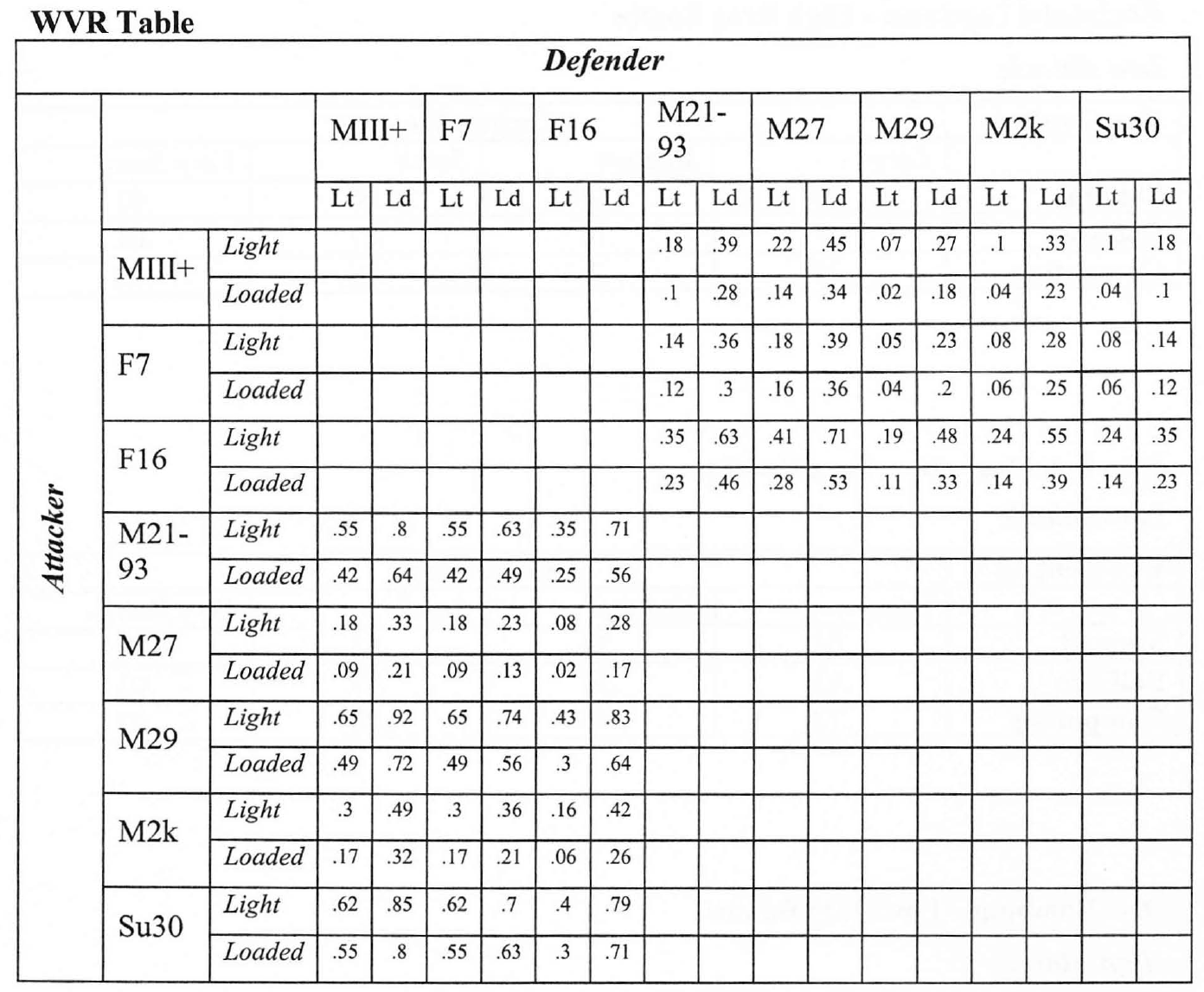 A simple lookup table for Within Visual Range combat (dogfighting). A lightly loaded Mirage III in a fight with a lightly loaded Su-30 would have a 10% chance of shooting down the Sukhoi, while the Su-30 would have a 62% chance of winning the fight.
A simple lookup table for Within Visual Range combat (dogfighting). A lightly loaded Mirage III in a fight with a lightly loaded Su-30 would have a 10% chance of shooting down the Sukhoi, while the Su-30 would have a 62% chance of winning the fight.


 Charts such as these were essential tools in running the exercise, but were simple to use, while imparting fundamental knowledge to the students during play.
Charts such as these were essential tools in running the exercise, but were simple to use, while imparting fundamental knowledge to the students during play.
Eventually, however, we decided to move on to another shot at the Falklands War with a completely new approach.
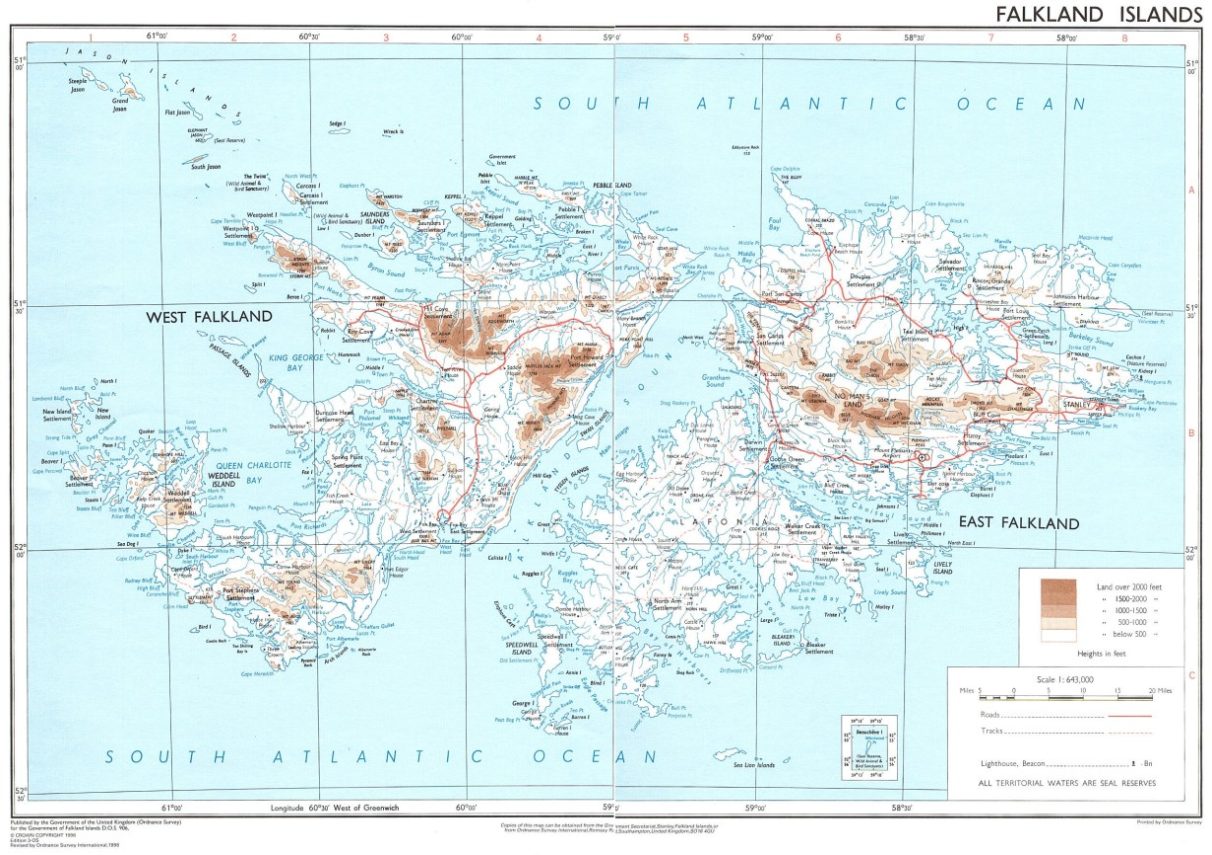
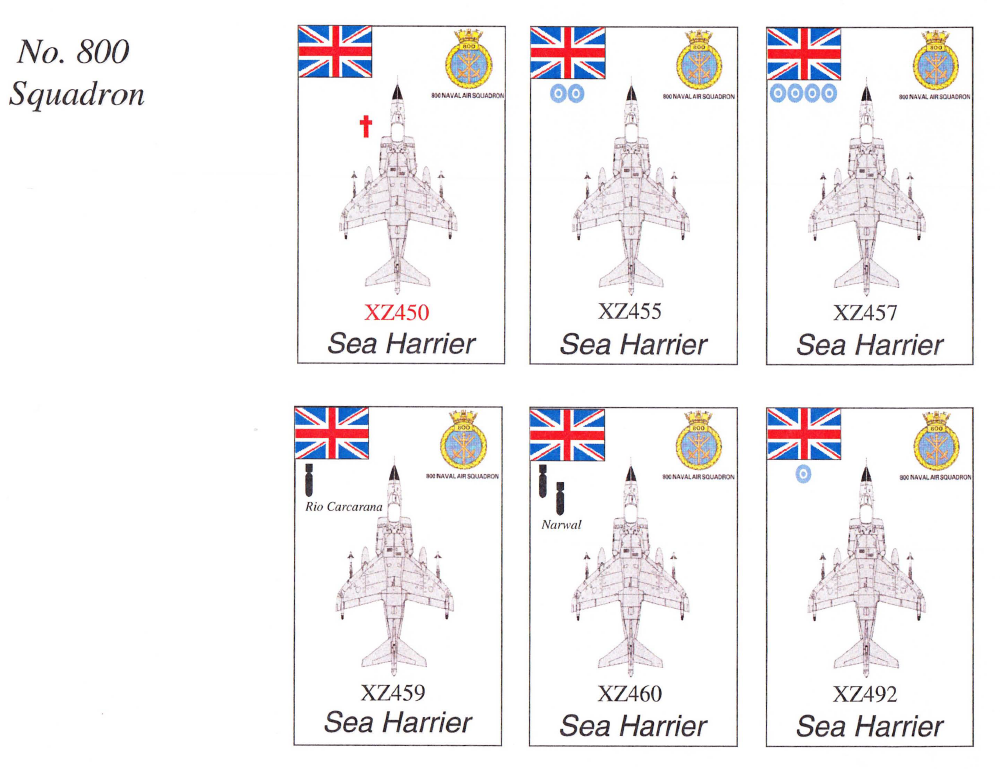 My initial attempt at making counters for the Falklands Air PE were both aesthetically pleasing and informative. Each card represents a single No 800 Squadron Sea Harrier. XZ450 was shot down (red aircraft number) and its pilot was killed in action (red cross), while XZ457 was the highest scoring aircraft of the conflict with four victories (this is an aggregate score of the multiple pilots who flew the aircraft).
My initial attempt at making counters for the Falklands Air PE were both aesthetically pleasing and informative. Each card represents a single No 800 Squadron Sea Harrier. XZ450 was shot down (red aircraft number) and its pilot was killed in action (red cross), while XZ457 was the highest scoring aircraft of the conflict with four victories (this is an aggregate score of the multiple pilots who flew the aircraft).
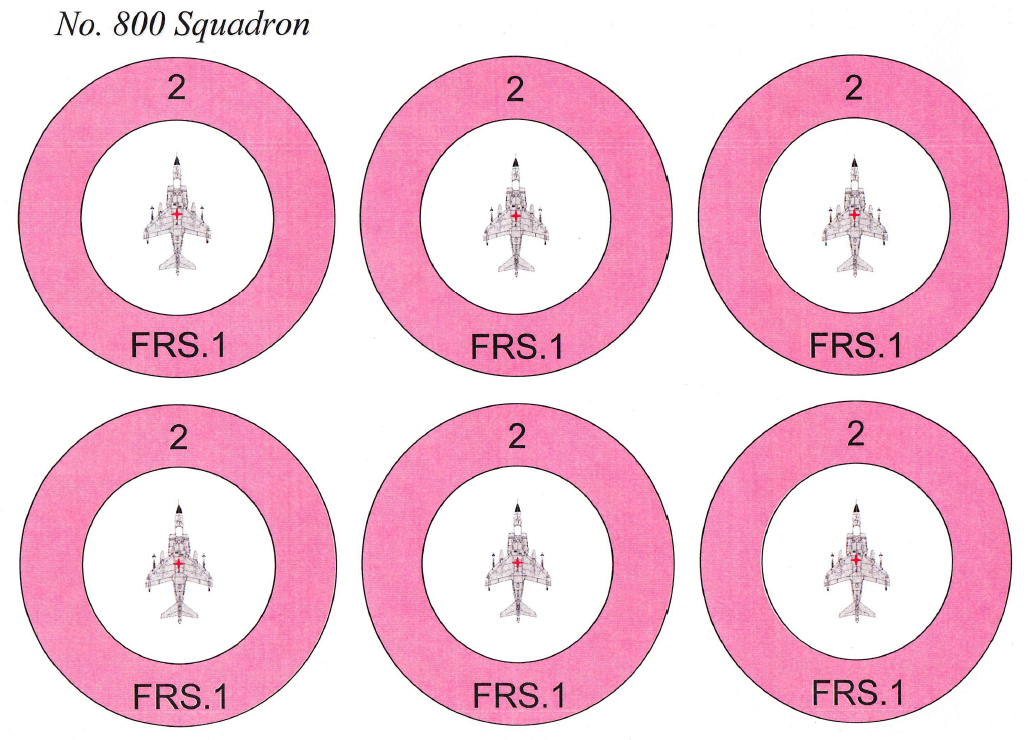 Eventually, we settled on a more practical, if less aesthetically pleasing, solution. The circles represent a practical limit on the distance a pilot can spot an enemy fighter-sized aircraft (about five miles) and were scaled to the aeronautical chart we used as a mapboard. The number represented the number of aircraft in the flight and would be marked off as aircraft were lost in combat. The counters were printed on clear plastic so one could easily see if the enemy aircraft’s location cross (centered on the aircraft illustration, in red) was inside the “dogfight circle” of an enemy aircraft. If so, it was, “Fight’s on!” An elegant solution, if I do say so.
Eventually, we settled on a more practical, if less aesthetically pleasing, solution. The circles represent a practical limit on the distance a pilot can spot an enemy fighter-sized aircraft (about five miles) and were scaled to the aeronautical chart we used as a mapboard. The number represented the number of aircraft in the flight and would be marked off as aircraft were lost in combat. The counters were printed on clear plastic so one could easily see if the enemy aircraft’s location cross (centered on the aircraft illustration, in red) was inside the “dogfight circle” of an enemy aircraft. If so, it was, “Fight’s on!” An elegant solution, if I do say so.
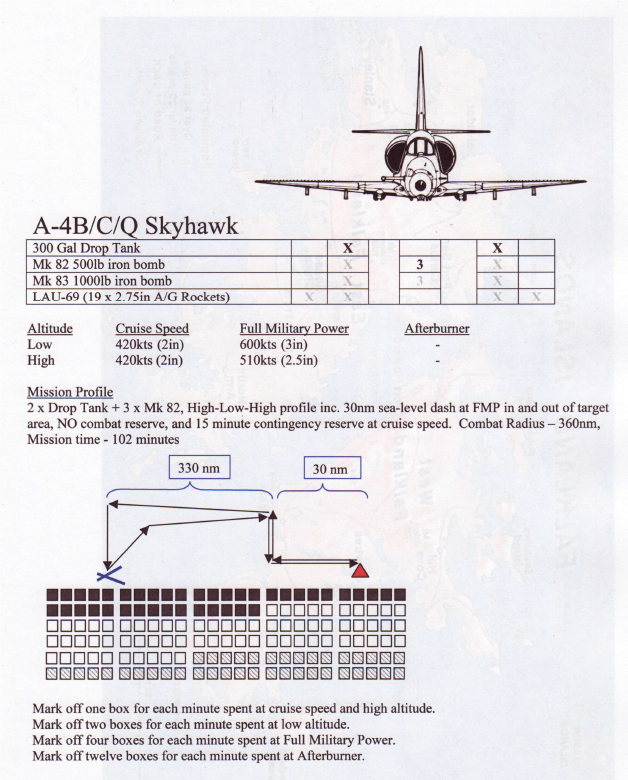 Additionally, the students had information on their own aircraft, which allowed them to plan their missions. At the top was a chart of possible loadouts with performance data below that. The Mission Profile was predicated on the real geography of the conflict between mainland bases and targets in the Falkland Islands. The black boxes on the fuel check-off chart represent fuel expended off-map on the way out to the target. The grayed-out boxes represent the same, only on the trip home. The students could expend fuel according to their judgment while using the white boxes, but had to fly off the edge of the map by the time the first gray box was checked off. The instructions were generic: the A-4 did not have an afterburner, as indicated in the performance section.
Additionally, the students had information on their own aircraft, which allowed them to plan their missions. At the top was a chart of possible loadouts with performance data below that. The Mission Profile was predicated on the real geography of the conflict between mainland bases and targets in the Falkland Islands. The black boxes on the fuel check-off chart represent fuel expended off-map on the way out to the target. The grayed-out boxes represent the same, only on the trip home. The students could expend fuel according to their judgment while using the white boxes, but had to fly off the edge of the map by the time the first gray box was checked off. The instructions were generic: the A-4 did not have an afterburner, as indicated in the performance section.
I am a firm believer that this kind of wargaming imparts more knowledge than all the lectures and books one could possibly assign. Having to assimilate information and use it to make decisions — particularly in a competitive environment — drives lessons home like nothing else. Our student critiques after our first (and only) running of this version proved this to be the case.
Immediately afterwards, the Kent School management decided to reorganize IMAC and use professional staff to teach the course, as opposed to analyst volunteers, so my association with teaching new analysts ended. I don’t know if they continued the use of our practical exercises, but I got the impression that this was one of their bones of contention — they simply didn’t see the relevance of wargaming.
Fortunately, the manager of the Counterinsurgency course did. In fact, before he contacted our cadre of wargame instructors, Charles was already working on a practical exercise of his own. He had run across the commercial wargame Algeria, and went so far as to contact the designer and seek his help in adapting the system for our use. We worked for quite a while to trim down the game to something that could be taught and played in a single afternoon, while still teaching the lessons we wanted the students to learn.
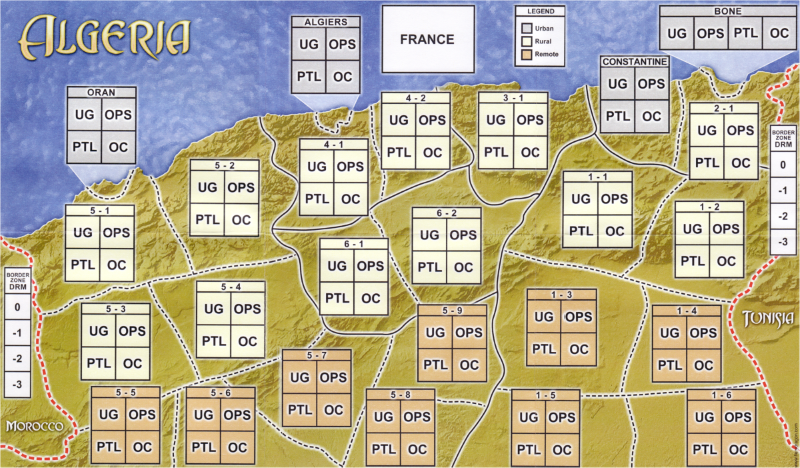 The original map for Algeria.
The original map for Algeria.
We did quite a few runnings of the Counterinsurgency PE, and it usually came down to a three (and rarely, four) turn game. With one instructor at each table of four students — two to a side — the first turn usually involved some fumbling around, but the second ran more smoothly, and the third was usually very productive. Student critiques were almost always positive and in the “hot-wash” sessions after the exercise was over, the students were usually very positive about the PE driving home the principles that they had learned in class. Many had “ah, ha!” moments.
Over a 28-year career in the Intel Community at two different agencies, there is no question in my mind that the use of wargames in training is a true force multiplier. Not only did the students put theory into practical application and witness the outcomes of their actions, they had to think about how to use their assets in particular situations as opposed to dealing with hypotheticals and generalities. We opened the eyes of an entire generation of analysts who are now running the IC. Hopefully, they appreciate the education we gave them and are perpetuating the lessons they’ve learned.
——————-
An Examination of Force Ratios
A friend just pointed me to a recent 2019 paper done out at C&GSC at Leavenworth. It is called “An Examination of Force Ratios” and is by Major Joshua T. Christian. It is 37 pages. It is here: AD1083211.pdf (dtic.mil)
A few notes
- “The nature of the inputs required for models such as the QJM or COFM mean that they are backwards looking, require numerous inputs, effort, and time to develop which limited their effectiveness to operational planners.”
Now, don’t know what he really means by the perjorative phrase ‘backwards looking,” but I will point out the TNDM (the upgraded version of the QJM) was used to predict the Gulf War, and these predictions were presented in testimony to the U.S. Congress and published in the book If War Comes, How to Defeat Saddam Hussien.” See: Assessing the TNDA 1990-91 Gulf War Forecast | Mystics & Statistics (dupuyinstitute.org) and Forecasting the 1990-1991 Gulf War | Mystics & Statistics (dupuyinstitute.org).
2. The second section of the paper, “Origins of Force Ratios,” focuses on Lanchester equations. We have discussed this before: Lanchester equations have been weighed…. | Mystics & Statistics (dupuyinstitute.org) and TDI Friday Read: The Lanchester Equations | Mystics & Statistics (dupuyinstitute.org) and The Lanchester Equations and Historical Warfare | Mystics & Statistics (dupuyinstitute.org) and Presentations from HAAC – Fitting Lanchester Equations | Mystics & Statistics (dupuyinstitute.org).
3. Page 13: Hate to nit pick, but peak strength in Vietnam was higher and earlier than what he states. There are a number of other such statements in this paper I could argue with, but will avoid doing that. See Vietnam War chart drawn from page 274 of America’s Modern Wars: Insurgency & Counterinsurgency | Mystics & Statistics | Page 4 (dupuyinstitute.org).
4. Page 13: I also note the discussion on the 10-to-1 counterinsurgent versus insurgent ratio. Also see: Presentations from HAAC – Iraq, Data, Hypotheses and Afghanistan | Mystics & Statistics (dupuyinstitute.org) and Force Ratios and Counterinsurgency II | Mystics & Statistics (dupuyinstitute.org) and A Force Ratio Model Applied to Afghanistan | Mystics & Statistics (dupuyinstitute.org). Also, I do have a chapter on Vietnam in my book Modern American Wars.
5. Page 14: “This section highlights the work of operations research analysts, particularly those produced by the Historical Evaluation and Research Program (HERO), ad how it contributed to the Army’s transformation of the 1960s and 1970s.”
This is an odd statement. HERO was mostly historians. There were no OR people on staff, although people like Dr. Janice Fain, Robert McQuie and Dr. James Taylor were friends of Trevor Dupuy and provided independent inputs as friends and consultants. I was the first employee with some background in quantitative analysis of historical data (primarily from econometrics). It is part of the reason I was hired in 1987.
The idea that HERO “contributed to the Army’s transformation of the 1960s and 1970s” is jolting to me. All my experience is that in general, we tended to be ignored, downplayed or just dismissed. The Army’s support for what we do is clearly demonstrated by the low levels of funding that have been provided over the decades.
6. Page 15: “…establishing Dupuy as a prominent figure in the operational research field by the 1970s.”
There is little chance that MORS (Military Operations Research Society) will give him an award. See: Vance R. Wanner Memorial Award (mors.org)
7. Page 26: Now he gets to discussing me. I will try to withhold commenting too much.
8. Page 27: “Lawrence utilized the Tactical Numerical Deterministic Model (TNDM), which succeeded the QJM, to conduct his analysis, and more specifically to determine the winner and loser of an engagement, assess personnel and equipment losses, and determine the rate of advance.
No, I did not. I did not use the TNDM or any combat model for any of my analysis in the book. I did due a few simple statistical comparisons but did no combat modeling. He is not the first person to have made such mistake, which can only have come about by skimming my book (vice reading the whole thing) and then making false assumptions. I do have a chapter towards the end of the book that discuss some of the validation tests we ran using the TNDM, which is what seems to confuse people, but the TNDM was not used for any of the analysis in the book. He does correctly describe the validation tests of the model.
9. “As a result, the TNDM is more frequently used by companies to develop requirements that drive the development of hypothetical weapons more so than operation planners.”
Uh, no. We have done one report for Boeing on FCS that could be considered as such, but that is all, ever. See: Insurgency & Counterinsurgency | Mystics & Statistics | Page 4 (dupuyinstitute.org).
10. Pages 31-32: In his discussion of insurgencies, it is clear has not seen my book America’s Modern Wars, or Dr. Andrew Hossack’s work or the work done by CAA on this using our databases (see pages 70-77 in America’s Modern Wars). He probably needs to.
11. Page 33: I will not comment on his conclusions. A few relevant blog posts: Summation of Force Ratio Posts | Mystics & Statistics (dupuyinstitute.org)
There are 34 references to Dupuy in the paper, 11 references to The Dupuy Institute, 8 references to me (I know, very vain of me), 8 references to Dr. Janice Fain, 15 references to HERO, 17 references to the QJM and 15 references to the TNDM.
“The Games the Marine Corps Plays”
An associate strongly recommended I look at this article. I would recommend the same to our readership: The Games the Marine Corps Plays | Military.com
It is written by Gary Anderson of GWU, who I do not know. But, to quote a few lines from the article:
- “You do not want prying eyes on your work that might question its rigor or validity.”
- “Since the Marines would be hundreds of miles away and irrelevant, they could be safely ignored.”
- “First, the Corps hired the most incompetent red team in the history of war-gaming, or their analysts cooked the books” (this sounds like a familiar problem, see: Wargaming 101 – Sayers vs. The U.S. Navy | Mystics & Statistics (dupuyinstitute.org)).
Anyhow, it is not a long article. Recommend reading it.